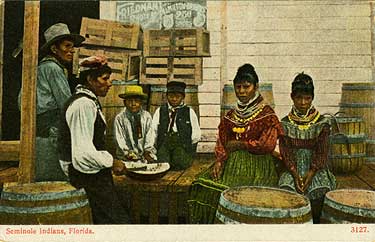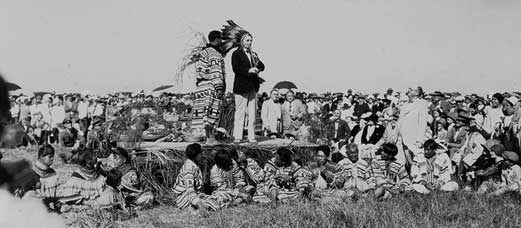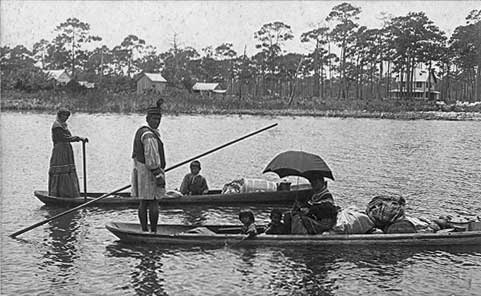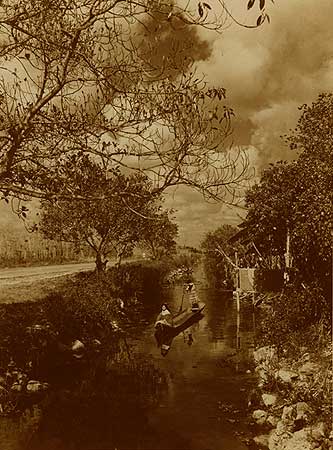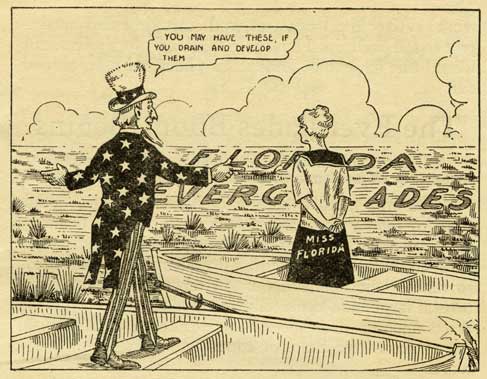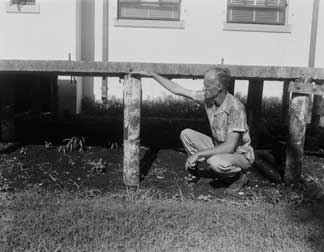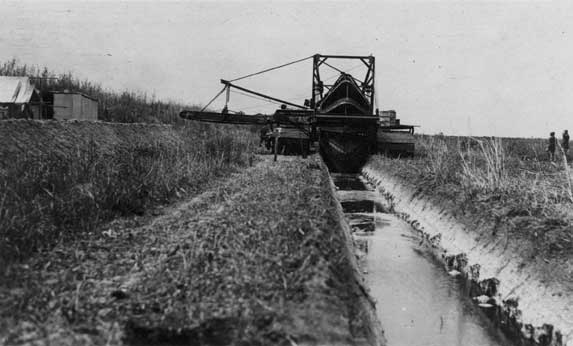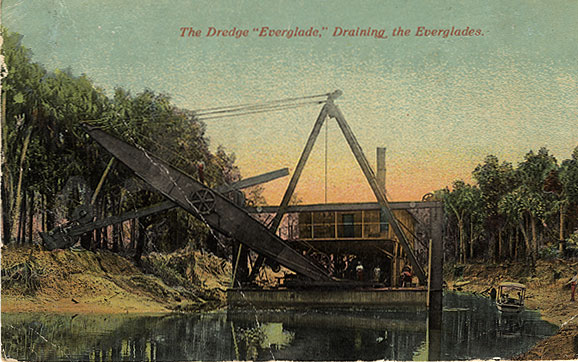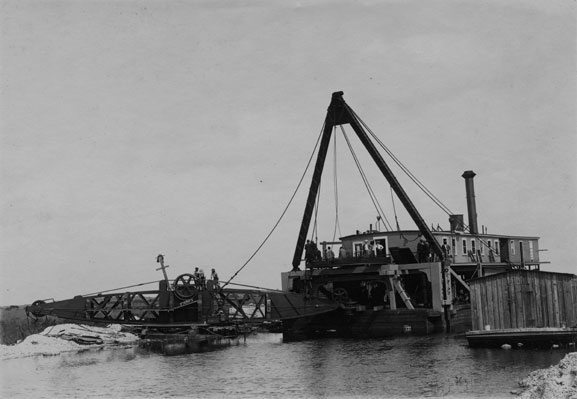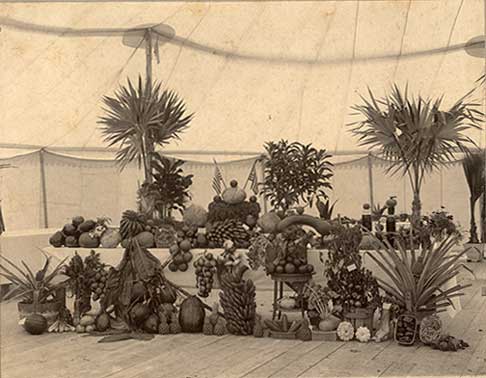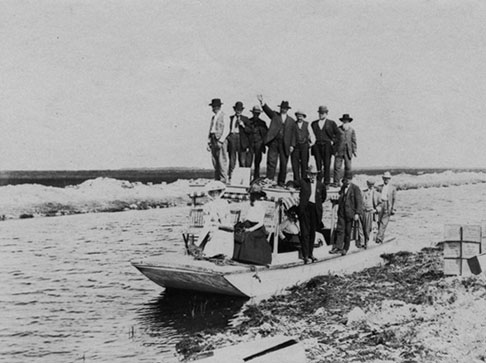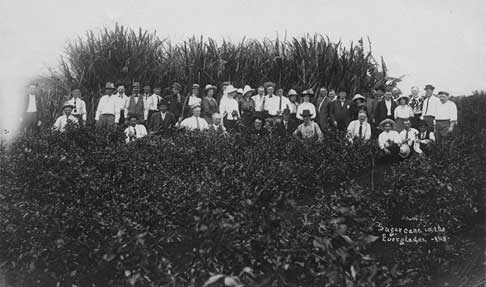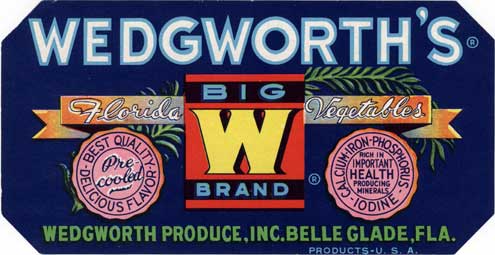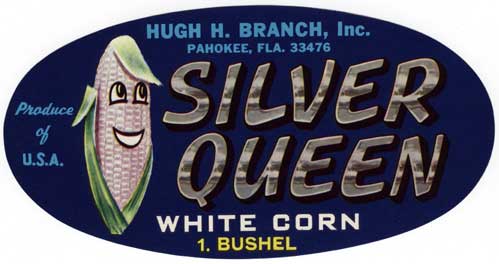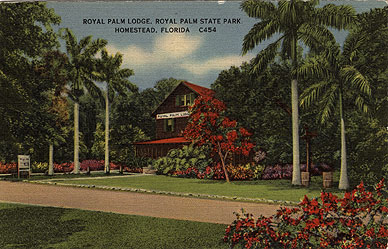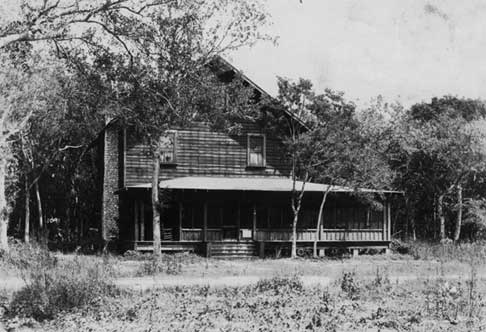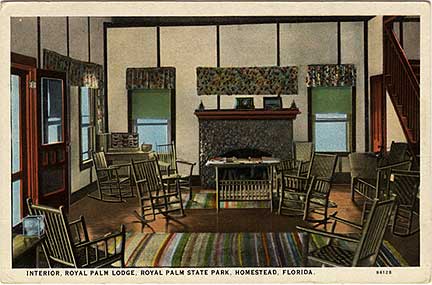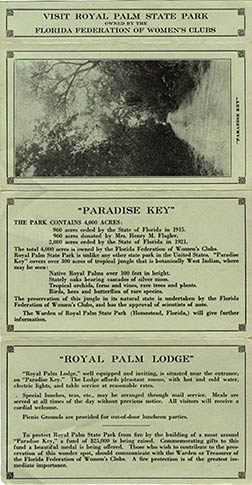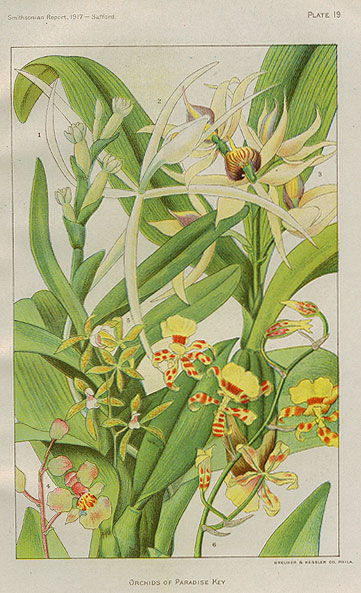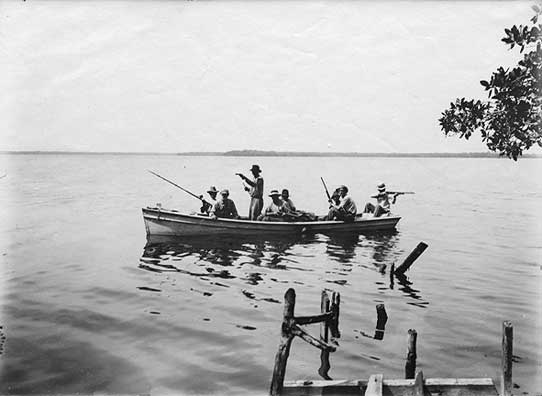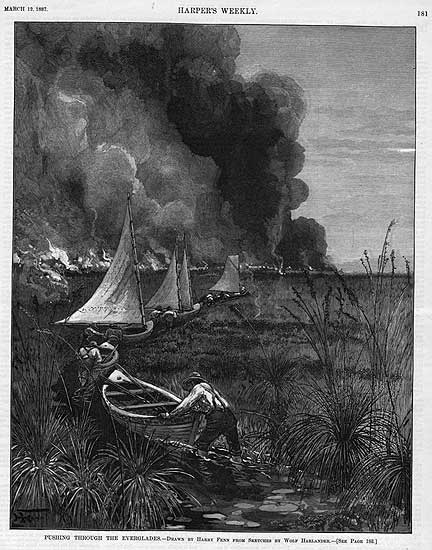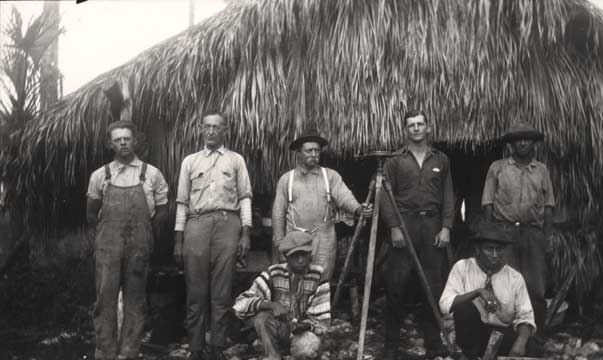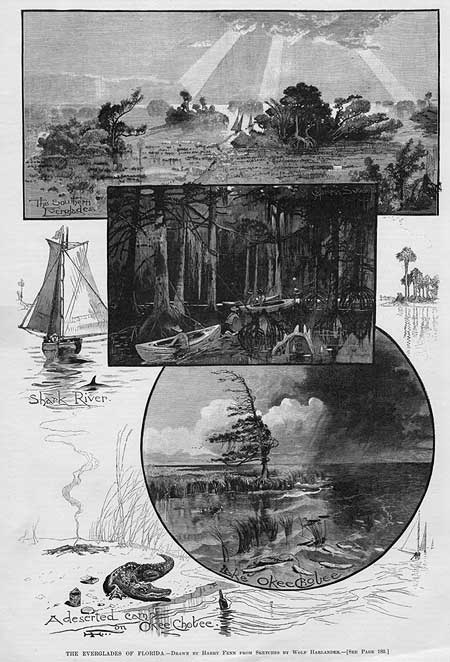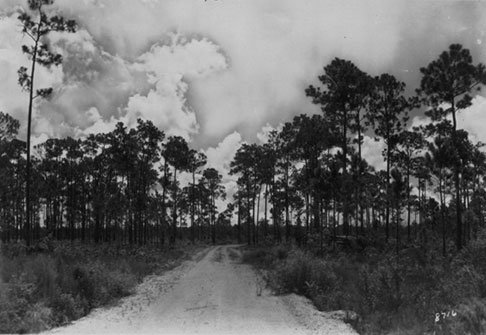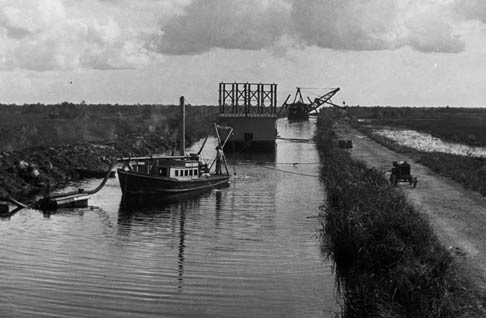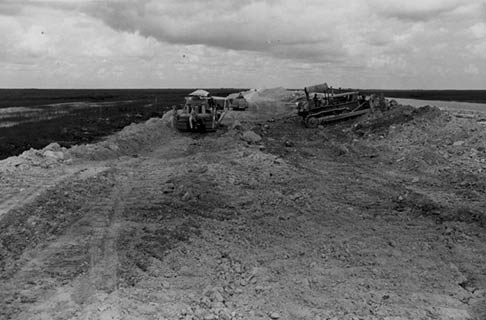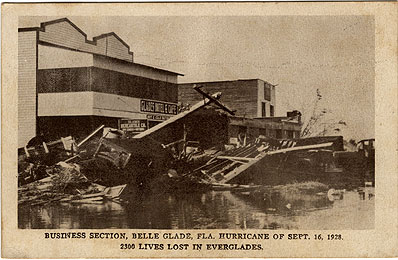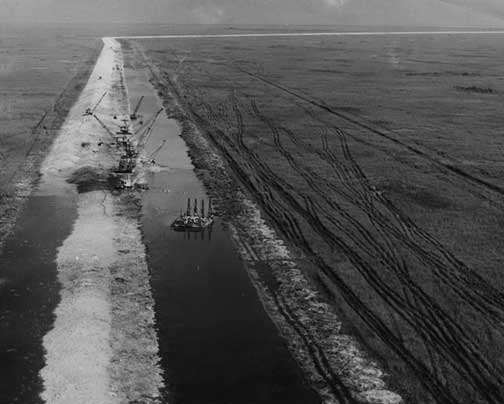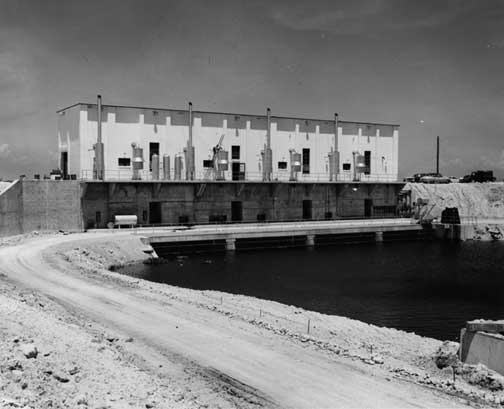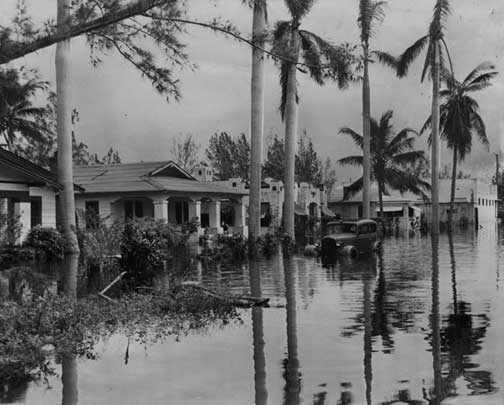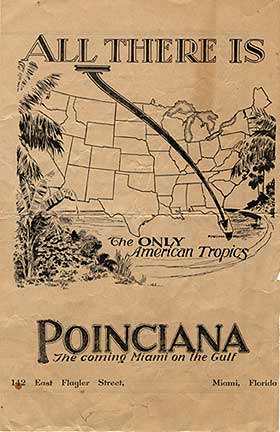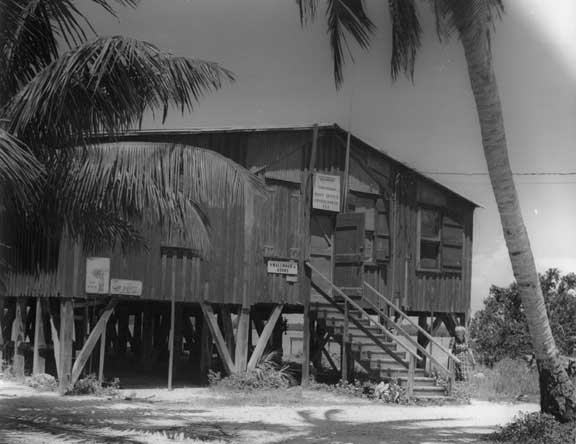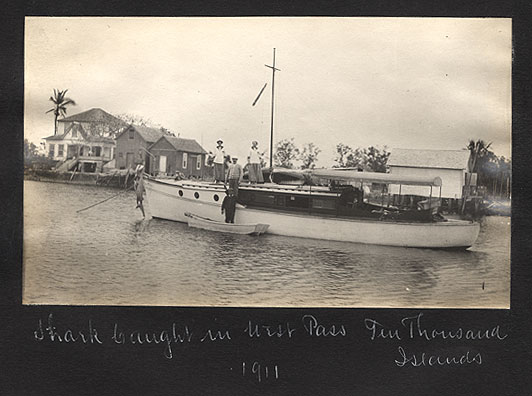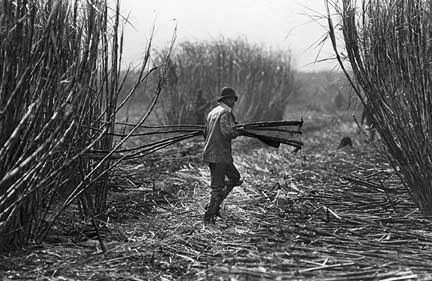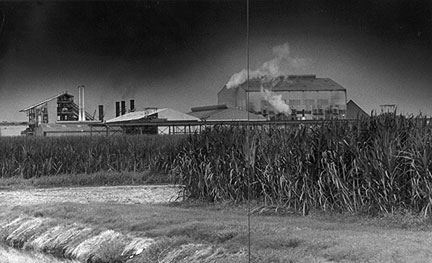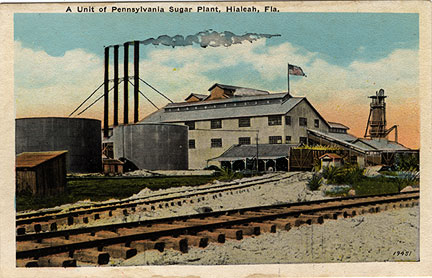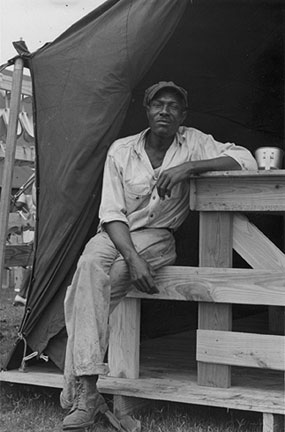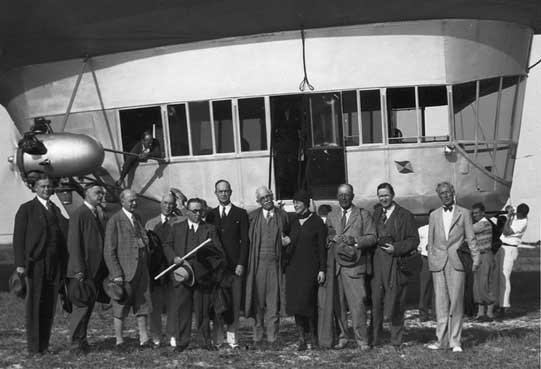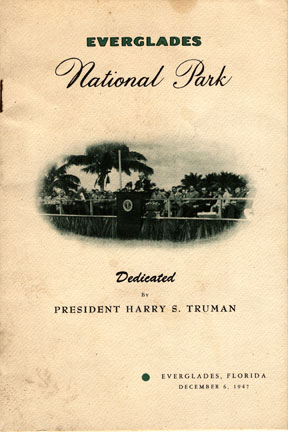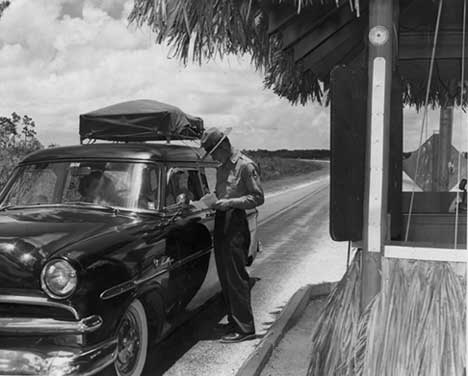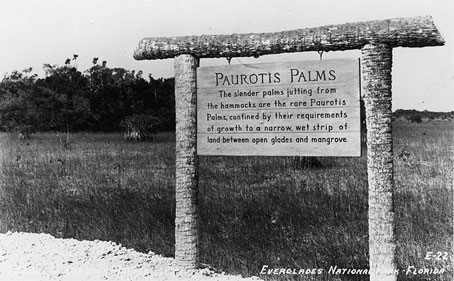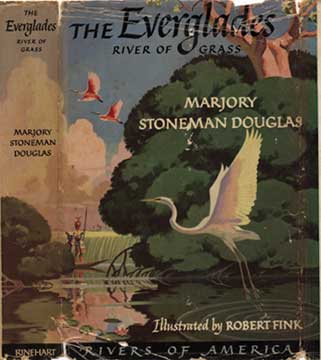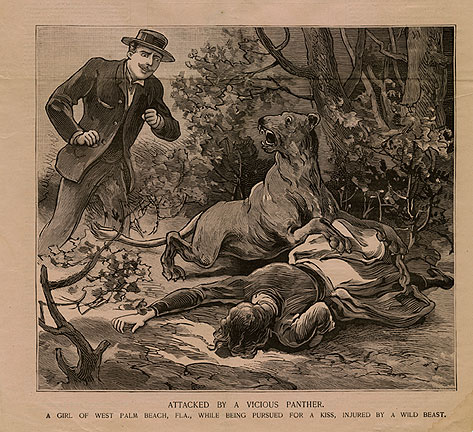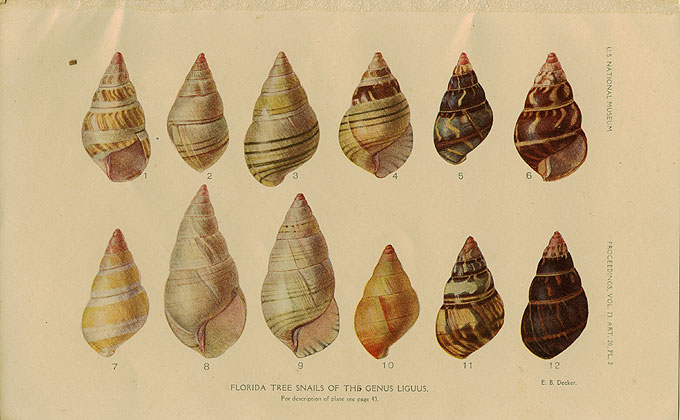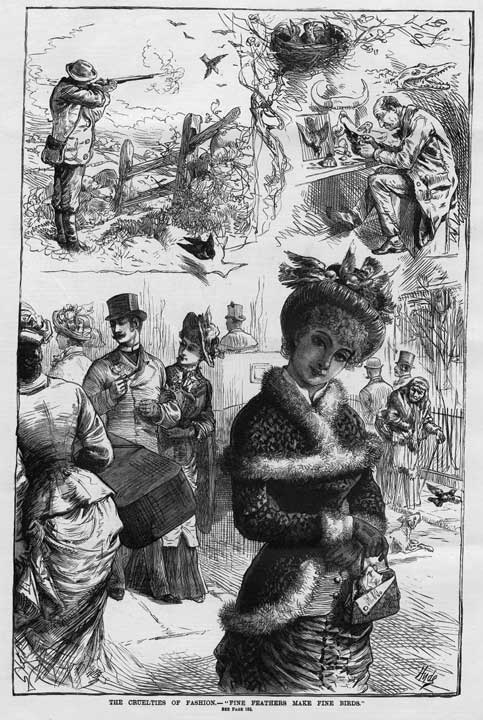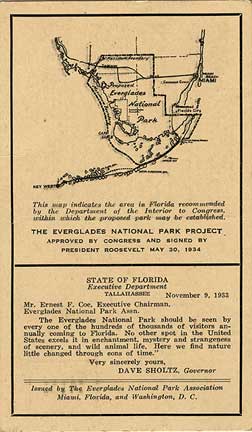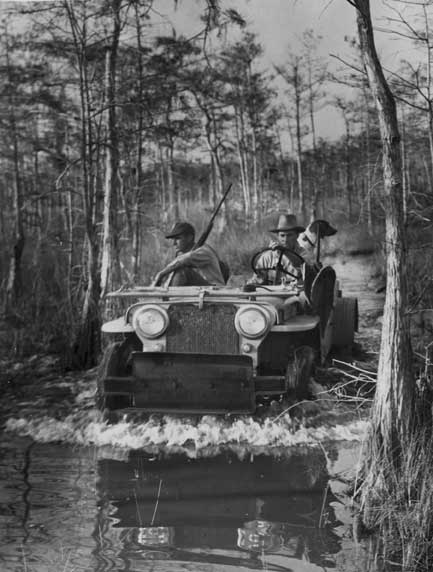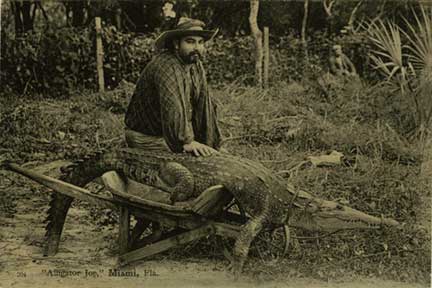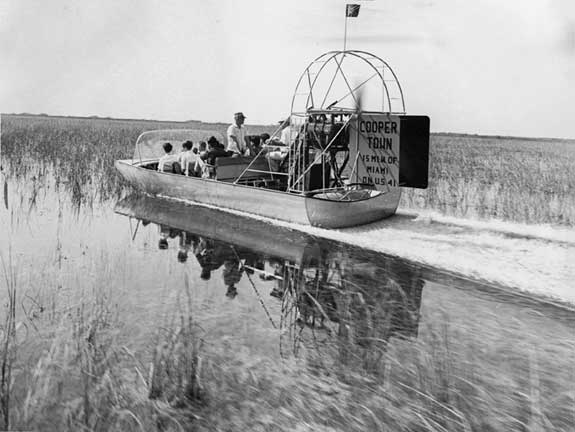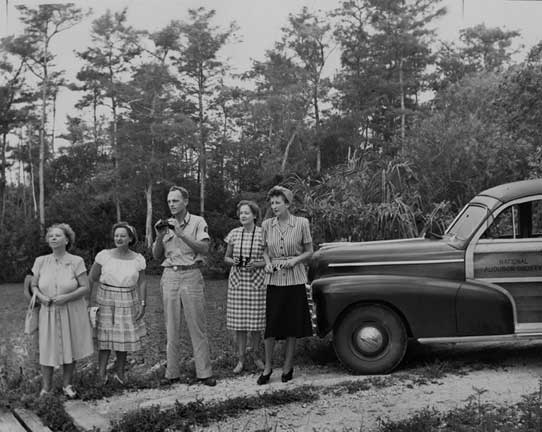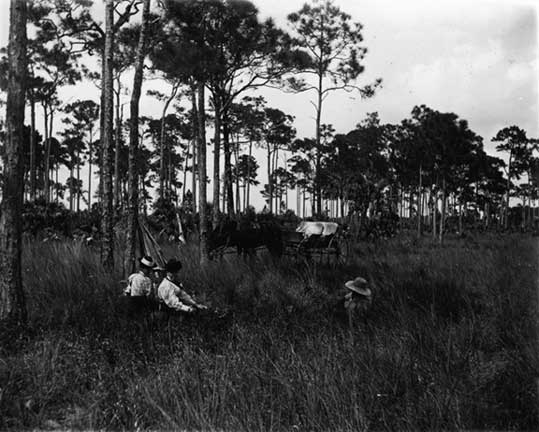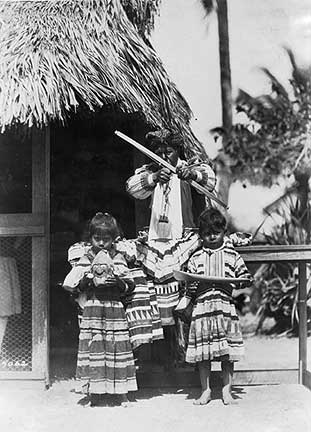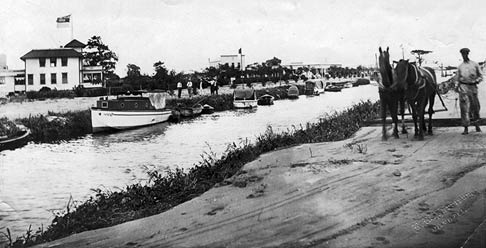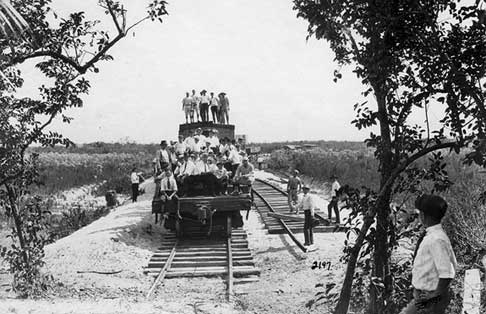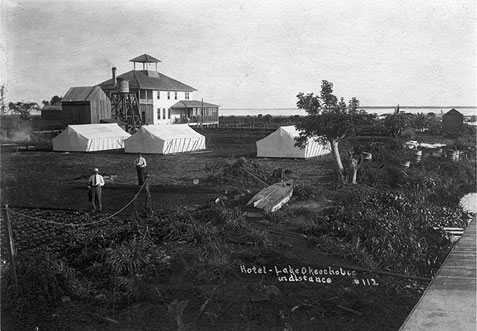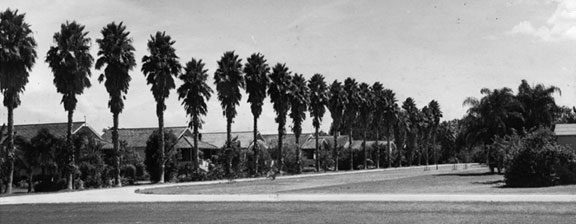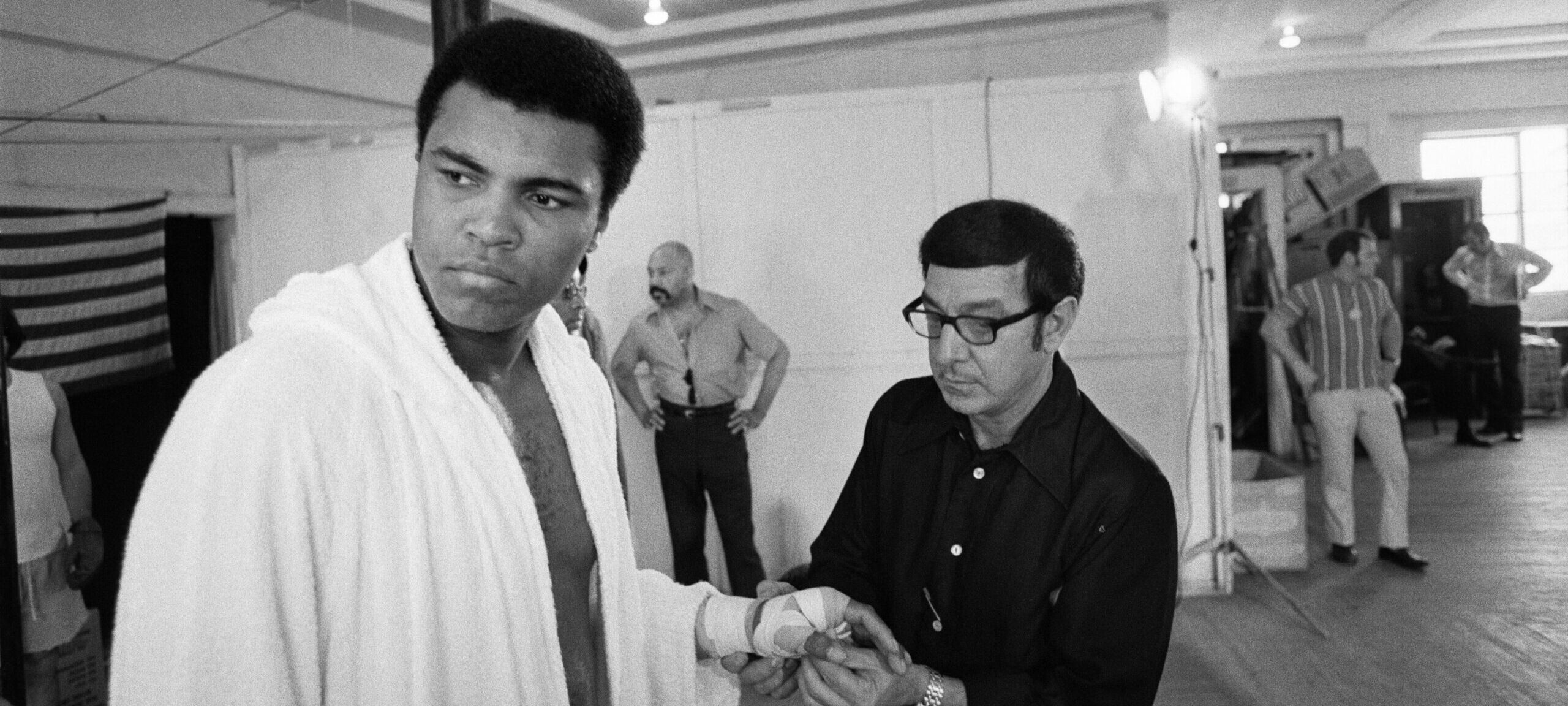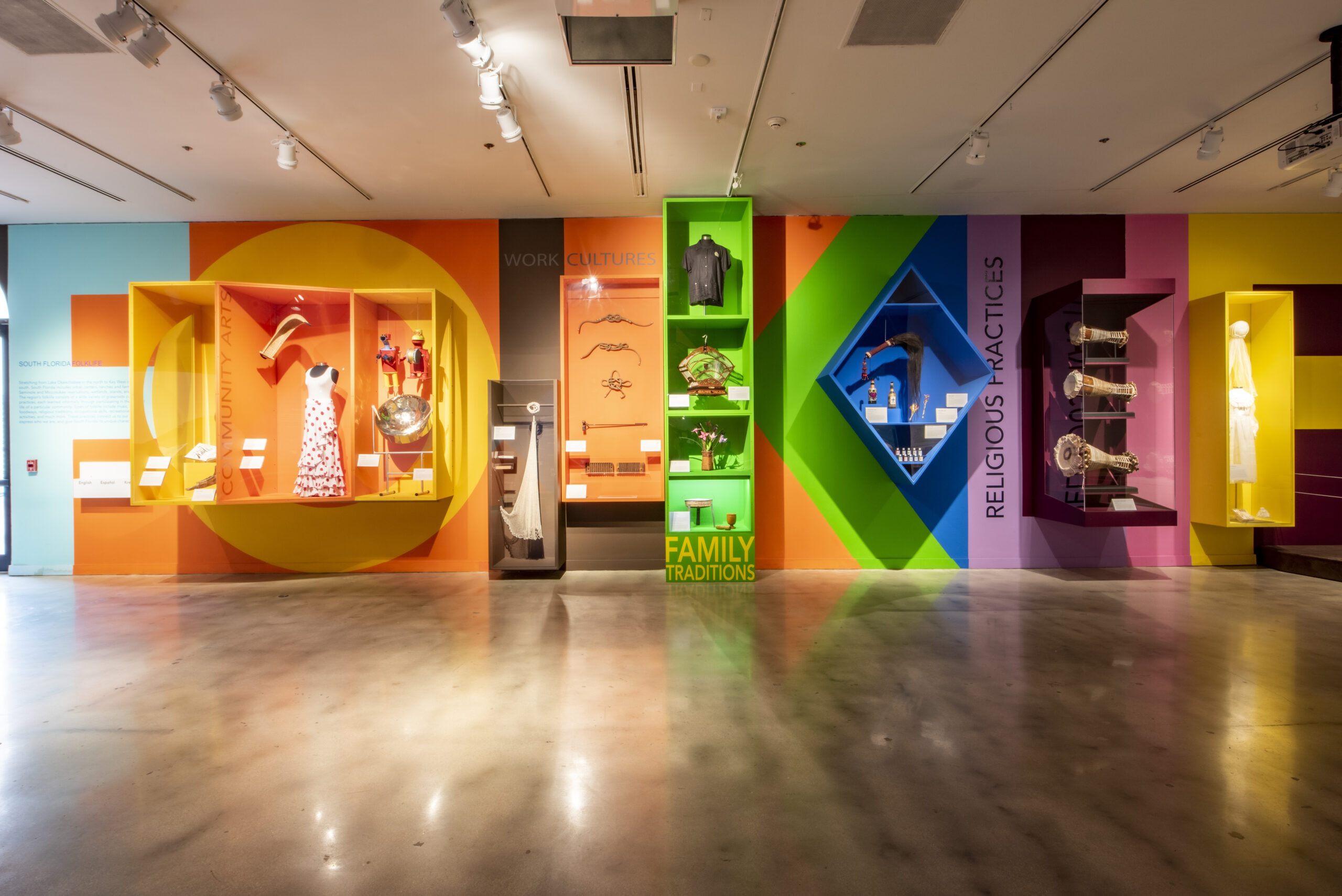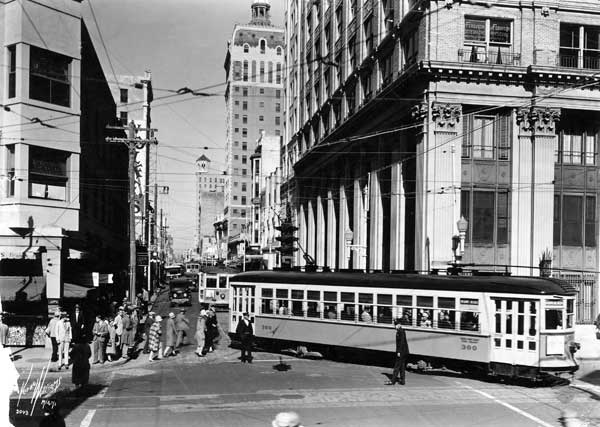INDIANS
Everglades Indians
The ancestors of today's Seminole and Miccosukee Indians moved into the South Florida interior during the early decades of the nineteenth century. They lived on remote tree islands throughout the Everglades and Big Cypress Swamp, and had little contact with the outside world. Beginning in the 1910s, tourist attractions brought them into contact with non-Indians and provided financial support while helping preserve their culture. Beginning in the 1930s, many, but not all, moved to reservations. The Seminole Tribe organized in 1957 and the Miccosukee Tribe in 1961.DRAINAGE
During the late nineteenth and early twentieth centuries, many people believed that South Florida's wetlands could be drained simply by digging canals, and that the new, dry land would be remarkably fertile.
For them, progress consisted of draining "swamps" and creating dry land that could then be farmed and built upon.
SMALL FARMS
Beginning in the early twentieth century, companies connected with drainage projects sold land to individuals for small truck farms. (A truck farm produces fruit and vegetables, which are trucked to city groceries.)
Much of the land was un-surveyed wetlands, which gave Florida realtors the reputation of selling "land by the gallon." Most purchasers never saw their land, but many others made a go of it. Everglades farming proved more difficult than anticipated, and few made a living as small farmers.
ROYAL PALM STATE PARK
The Florida Federation of Women's Clubs established Royal Palm State Park in 1916, on land donated by the Model Land Company and purchased by the Federation.
The park protected Paradise Key (including present-day Anhinga and Gumbo Limbo trails in Everglades National Park), a large hardwood hammock containing many Royal Palms. In the 1940s, the Federation gave the land to the federal government, and it became part of Everglades National Park.
EXPLORATION
Few people other than Indians ventured into South Florida's interior during the nineteenth century; and the land, consequently, was mysterious, unknown, and misunderstood.
A series of expeditions gradually revealed the nature of the Everglades to civilization.
Read A. P. Williams’ report: part 1 and part 2
EVERGLADES ROADS
FLOOD CONTROL & WATER MANAGEMENT
After 1928, Everglades engineering projects shifted from drainage and land reclamation to flood control.
Over the years, new canals were dug, old canals were deepened, and dikes, levees, and pumping stations were added, all to prevent flooding in urban, suburban, and agricultural areas. While these projects made it possible for coastal cities to grow and thrive, natural areas were severely affected by reduced and arbitrary water flow.
During the last quarter of the twentieth century, projects shifted once again, from flood control to water management, in order to provide for both civilization and nature.
LOWER EVERGLADES SETTLEMENTS
In the lower Everglades, homesteads and settlements grew on bays and navigable creeks. The Everglades' first white settlers lived in remote places, surrounded by wilderness.
There, frontier men and women made a living through subsistence farming, hunting, fishing, trading posts, and charcoal making.
SUGAR IN THE EVERGLADES
At first, vegetable and sugar farms in the Everglades struggled and failed. Farmers needed more land, reliable labor, and knowledge of growing conditions in reclaimed muck.
By mid-century, the small farms of the 1910s had been consolidated into large plantations in the Upper Everglades, and farmers had acquired the knowledge and labor to successfully farm crops.
Beginning in the 1960s, growers concentrated upon sugar, and increased the number of acres under cultivation. The water table was lowered to stimulate sugarcane growth, and the nutrient-laden water that flowed south from the fields altered the vegetation in the Everglades. In many places, for example, cattails replaced sawgrass.
EVERGLADES NATIONAL PARK
During the 1920s and 1930s, Ernest F. Coe led the campaign to create a national park in the Everglades.
Congress passed an act to create the park in 1934, but the Depression and World War II delayed its founding until 1947. Since then, Everglades National Park has expanded it boundaries to include Chekika State Park in South Dade and other land in the East Everglades.
ENDANGERED SPECIES
BIG CYPRESS NATIONAL PRESERVE
The 1930s plans for Everglades National Park included most of Big Cypress Swamp, but for political and financial reasons, it was excluded from the 1947 park boundaries.
During the 1960s, another campaign for a national park began, and led to the creation of Big Cypress National Preserve in 1974. It differs from a national park in that some economic and recreational activities are permitted, such as oil exploration and hunting.
EVERGLADES TOURISM
People began visiting the Everglades for pleasure during the late 1800s. Most traveled on small sailboats to coastal settlements, such as Coconut Grove and Chokoloskee.
Steamboats and other, smaller boats carried sightseers up canals and "improved" waterways. As roads were built and improved, more people ventured inland.
EVERGLADES RESTORATION
During the past century, humans changed South Florida's environment, making it possible for the cities along the coast and the farms south of Lake Okeechobee to exist. The price, however, has been high: the region's water supply and the Everglades are both in jeopardy.
To repair the mistakes of the past, the state and federal governments have embarked upon 68 restoration projects that will cost at least $8 billion over more than 20 years. The governments have stated that Everglades water needs will be given priority over development, but the needs of cities and agriculture will always exert pressure upon decision-makers. This chapter in Everglades history remains to be written.


